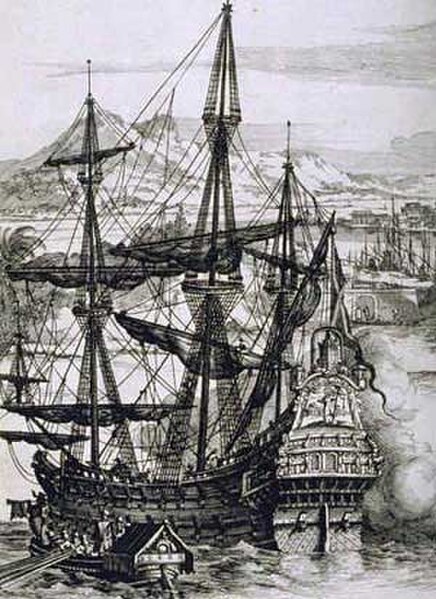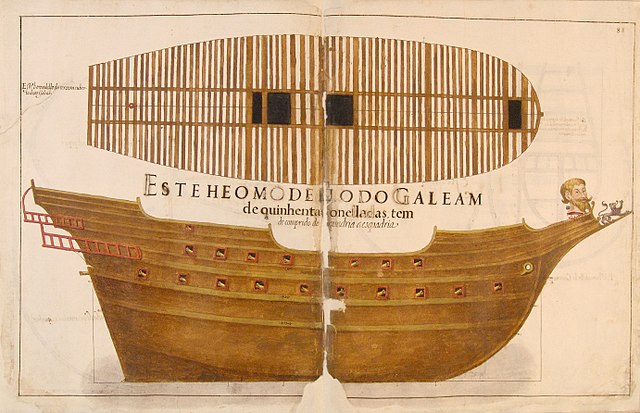Galleons were large, multi-decked sailing ships developed in Portugal and Spain and first used as armed cargo carriers by Europeans from the 16th to 18th centuries during the age of sail and were the principal vessels drafted for use as warships until the Anglo-Dutch Wars of the mid-1600s. Galleons generally carried three or more masts with a lateen fore-and-aft rig on the rear masts, were carvel built with a prominent squared off raised stern, and used square-rigged sail plans on their fore-mast and main-masts.
A Spanish galleon (left) firing its cannons at a Dutch warship (right). Cornelis Verbeeck, c. 1618–1620
A Spanish galleon
Technical drawing of a late 16th century or early 17th century Portuguese galleon, featured in the Livro de Traças de Carpintaria
Model of an English galleon sporting four mast types: (left to right) • Bonaventure mizzenmast, typically lateen-rigged and shorter than the main mizzen. • Mizzenmast, typically shorter than the foremast and lateen-rigged. • Mainmast, the tallest mast and, on vessels with more than three masts, the most centrally located. • Foremast, the second-tallest mast.
A sailing ship is a sea-going vessel that uses sails mounted on masts to harness the power of wind and propel the vessel. There is a variety of sail plans that propel sailing ships, employing square-rigged or fore-and-aft sails. Some ships carry square sails on each mast—the brig and full-rigged ship, said to be "ship-rigged" when there are three or more masts. Others carry only fore-and-aft sails on each mast, for instance some schooners. Still others employ a combination of square and fore-and-aft sails, including the barque, barquentine, and brigantine.
A barque—a three-masted sailing ship with square sails on the first two masts (fore and main) and fore-and-aft sails on the mizzenmast
Fijian voyaging outrigger boat with a crab claw sail, an example of a typical Austronesian vessel with outriggers and a fore-and-aft sail
A carved stone relief panel showing a Borobudur ship (Austronesian) from 8th century Java, depicted with outriggers and fore-and-aft tanja sails
Chinese junk Keying with a center-mounted rudder post, c. 1848








